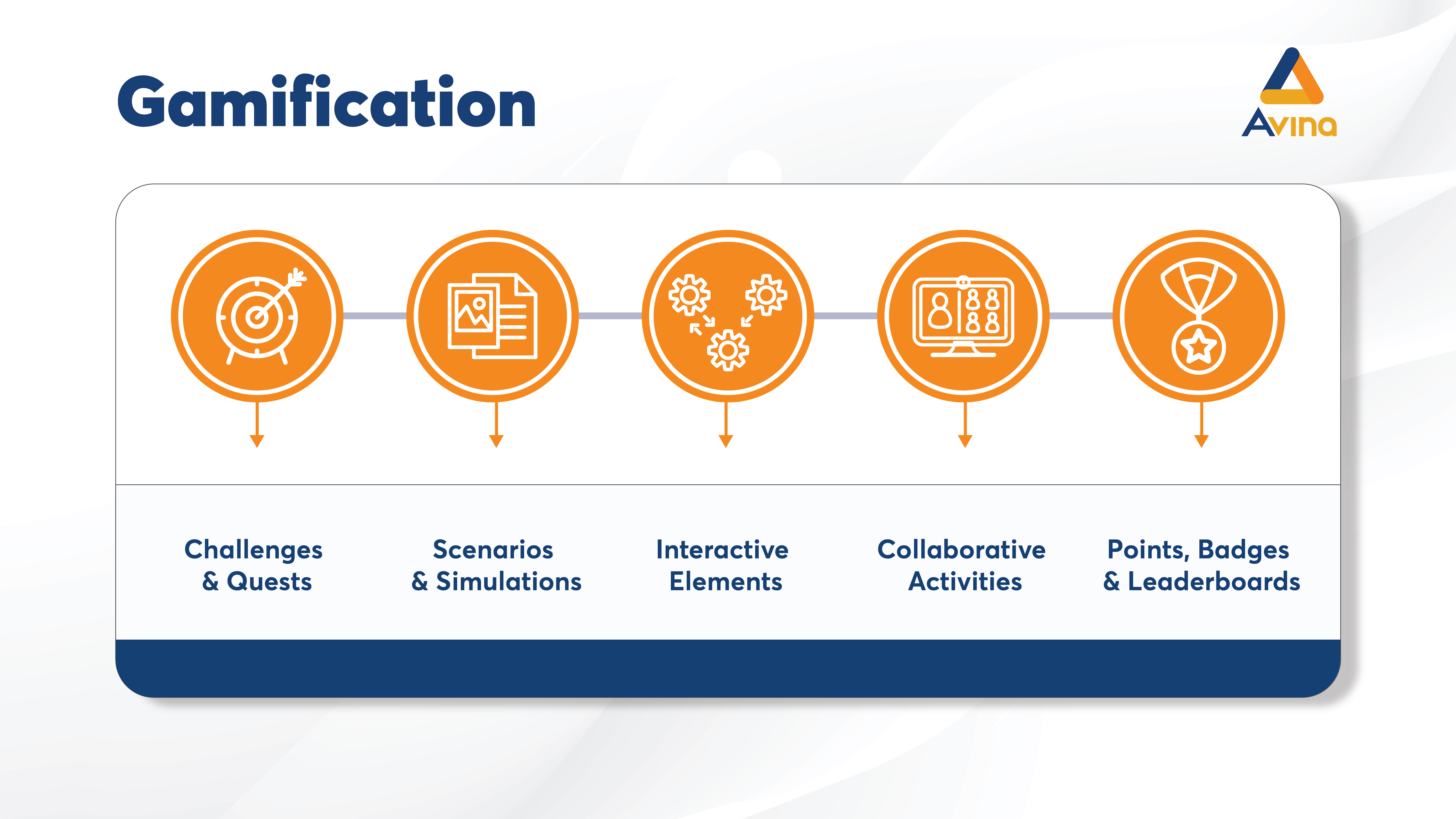Introduction
Imagine staring at an endless computer screen filled with text and bullet points; eyelids begin to droop while your mind wanders. Unfortunately, this scenario is all too real for many learners who opt for traditional eLearning formats; but what if learning could become engaging, interactive, and even competitive? Enter gamification!
Gamification is the application of game design concepts to non-gaming environments such as eLearning. By including game elements like points, badges, leaderboards, challenges and simulations into non-passive learning tasks - such as passively taking notes - into dynamic and enjoyable experiences that motivate learners to actively engage in lessons.
Gamification offers many advantages to online learning environments. As well as increasing learner engagement, it encourages active participation, improves knowledge retention and provides immediate feedback to teachers. Gamification also gives educators useful tools for monitoring performance assessment and creating engaging learning environments which suit various learning styles for improved outcomes. Various gamification techniques exist which offer benefits.

eLearning platforms encourage learners to complete modules by offering points, badges, and leaderboards - providing a sense of achievement as well as encouraging healthy competition - all while driving continuous engagement throughout their learning journeys.
Integrating challenges and quests into eLearning modules adds a goal-oriented and interactive learning experience for learners, encouraging critical thinking skills as they engage actively in problem-solving activities that help meet learning objectives in an engaging yet structured manner. This type of activity fosters critical thinking abilities as participants actively take part in solving them to meet learning objectives in an enjoyable manner.
Gamified scenarios and simulations offer learners an engaging environment to put theoretical knowledge into action. By engaging with real-life scenarios, learners can practice decision-making, problem-solving, and application of concepts risk-free while improving understanding and retention of complex topics.
Storylines, avatars and interactive elements offer learners an engaging journey. Not only do these elements enhance engagement, but they can also foster emotional ties that make the learning process memorable and enjoyable for learners of all ages.
Fostering collaboration through group activities, discussions and team challenges promotes social interaction, peer learning and a sense of community among learners. Collaborative gamification activities help develop communication skills, teamwork abilities and knowledge sharing between teammates - creating an engaging learning experience in which everyone feels included and valued.
Gamification has proven its effectiveness in eLearning with popular apps like Duolingo, Quizlet, and Kahoot that effectively employ game elements as part of language teaching strategies - showing how this strategy can make language acquisition an engaging and fulfilling experience for users of all ages and proficiency levels.
Duolingo provides an interactive language learning experience through elements like points, levels, rewards and challenges that make language study engaging and fun. Users earn points for completing lessons, unlock new levels as they advance, receive rewards for achievements made, and face challenging language tests that test their language abilities. This gamified approach not only encourages users to stay on task consistently but also makes their experience engaging and interactive - increasing motivation while heightening retention rates!
Quizlet is an outstanding example of gamification in eLearning, particularly within the realm of studying and memorization. Utilizing game elements such as points, levels, rewards and challenges - Quizlet turns studying into an engaging activity where users can earn points by answering correctly while progressing through various levels of difficulty, receiving rewards for mastering concepts as they advance and engaging in challenges that test knowledge retention.
Kahoot is an engaging platform that gamifies learning with interactive quizzes and challenges, using game elements such as points, levels, rewards and challenges to make learning more engaging and competitive. Users can earn points for answering correctly while competing against peers to climb leaderboards. As they work towards their achievements, they receive rewards along the way and face challenging questions that test both knowledge and skills - creating healthy competition among learners while encouraging active participation and knowledge retention.
AVINA Authoring Tool is a specialized authoring tool developed specifically to create engaging and interactive eLearning experiences. Teachers using AVINA can seamlessly incorporate gamification elements directly into their courses, providing personalized and engaging learning experiences tailored to individual learner preferences.
AVINA provides a variety of interactive features such as quizzes, drag-and-drop exercises, interactive simulations, and open-ended questions which act as catalysts to foster students’ active participation. These interactive elements transform rote memorization into active learning, solidifying understanding and boosting retention.
By including gamification elements and customized learning experiences, AVINA helps educators create courses that capture learners' attention while increasing participation and improving retention rates, ultimately leading to improved learning outcomes.
With technological progress accelerating at an impressive rate, the future of eLearning gamification holds exciting possibilities. New trends such as AI-powered personalized learning paths promise to revolutionize how educational content is provided to individual students for more adaptive and effective learning experiences.